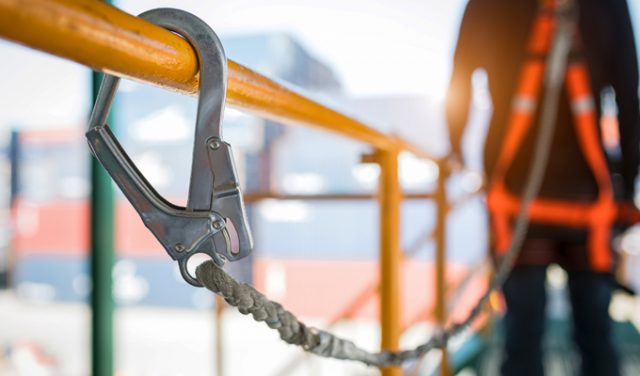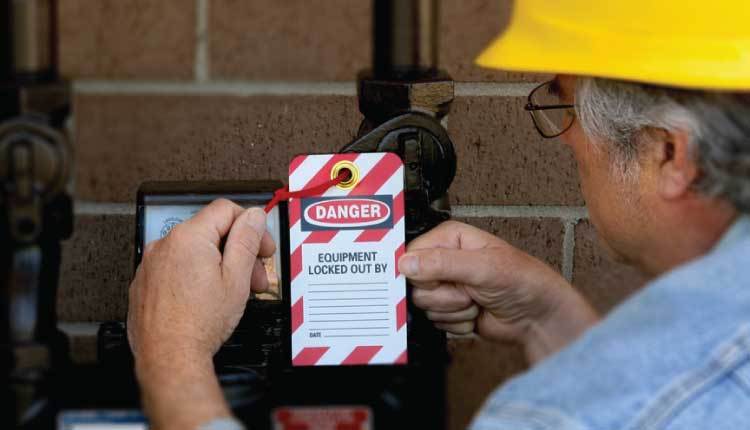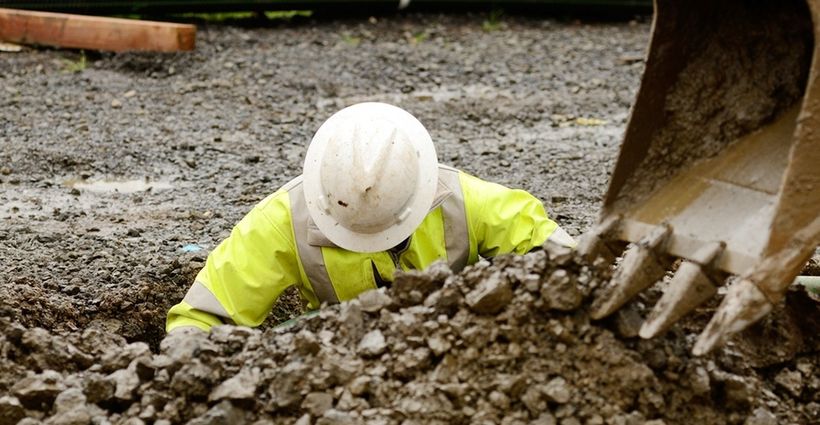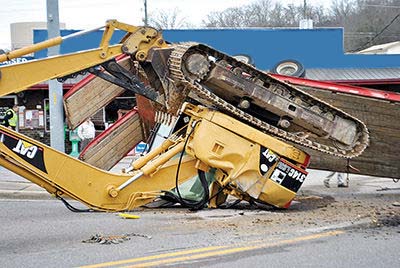Every year, thousands of construction workers are injured on the job, therefore, site safety is essential within the industry. The construction industry uses multiple heavy plant machinery on a daily basis, the utter size and power of these large pieces of equipment also make a construction site a potentially dangerous place to work. In order to reduce the hazards that come with using plant machinery, you and your workers must be aware of any potential dangers and recognise heavy equipment hazards.
When working around heavy equipment, it has been identified that the following hazards are the most common on construction sites:
1. Falls

Working at height and on elevated platforms is necessary for many construction projects, however, this leads to falls at work being some of the most common construction site hazards. A fall from a moderate height can lead to serious injury and higher heights can sometimes result in death, therefore it is crucial to ensure workers are securing them self when working at height to prevent any falling accidents.
You should ensure that all potential fall zones are identified and labelled as a dangerous hazard so that anyone who needs to access the area is aware of this prior and understand the safety precautions they must follow.
Where possible, you should install safety barriers along elevated work zones to prevent accidental slips. All workers who may need to access an elevated platform or work at height should be provided with safety harnesses and proper training before entering the dangerous area.
2. Electrocution

Utilizing faulty equipment or not following proper safety protocols can result in electrocution. Employees must be fully trained to use each piece of heavy equipment and follow all manufacturer recommendations. Overloading machinery or using them in ways other than they are suitable for may increase the risk of an individual being electric shocked.
Many electrocution incidents occur due to a power source that wasn’t properly shut off or a worker didn’t verify that a lockout or tagout procedure was followed before intervening on a machine. Its essential to ensure that an electrical lockout or tagout procedure is in place and is being followed by workers at all times.
Electrocution accidents can be prevented by performing regular checks of your heavy equipment to ensure that all wires, fuses, safety devices and other electrical protections are in place and are working correctly. Before using any equipment, an inspection should be undertaken to ensure that the machinery is operating as it should and there are no damages to any areas of the machinery.
3. Struck-by Incidents

Struck-by incidents occur when a construction worker is injured as a result of being struck by materials, machinery or equipment. According to OSHA, struck-by incidents are the leading cause of injury and fatality on construction sites.
Work areas where construction machinery is in operation should be clearly marked and barricaded to prevent any accidental struck-by injuries caused if an employee was to enter a work zone whereby they were unaware that heavy equipment is in operation.
Ground personnel entering a work zone should ensure their presence is known to all operators within the area and operators should avoid backing where possible to prevent backing accidents. Ensuring all workers are wearing correct PPE and high-visibility clothing can help to prevent serious injuries from occurring.
4. Caught-in Incidents

Similar to struck-by incidents, caught-in incidents are when an individual is injured due to being stuck between two objects. A large proportion of caught-in incidents are vehicle-worker accidents where the operator of the heavy plant equipment cannot see a worker and pinned them. For example, crushing a worker against a building or other piece of equipment or pinning a worker against a wall or fixed object.
Ensure all employees have established communication before starting work – hand signals, whistles, radios, audible alarms or other means of effective communication should be used. Operators should always know exactly where all ground-based workers are located prior to and during their work. Where possible, it’s advisable to use a spotter when moving heavy machinery around the site.
5. Equipment Overturns

Most construction sites will have areas with uneven terrain and open excavations. Construction workers must take extra precaution when moving plant machinery around the site to prevent the equipment from accidentally overturning. Where there are open excavated areas, all employees must be fully aware and ensure they are not driving machinery too close to the edge of the pit to prevent overturning.
Ensure that workers have a defined route and a clear visual path for the machinery operator before moving any plant equipment around the site, this will help to prevent any unforeseen accidents from occurring.
Following strict safety measures allows your construction projects to run smoothly and efficiently. Ensuring all workers are trained on machinery properly before use helps to prevent any accidents from occurring which could result in injured staff, lost labour and slow the speed of your project.
